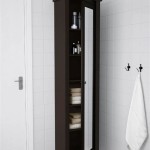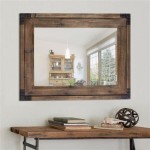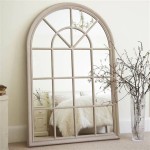Antique French Gold Framed Mirrors: A Guide to Elegance and History
Antique French gold framed mirrors represent more than just reflective surfaces; they embody artistry, history, and a touch of French elegance. These pieces often serve as focal points in interior design, adding depth, light, and a sense of grandeur to any space. Understanding the nuances of these mirrors, from their construction to their historical context, can aid collectors and enthusiasts in appreciating their true value.
Key Features of Antique French Gold Framed Mirrors
Several key features distinguish authentic antique French gold framed mirrors:
- Hand-carved frames: Genuine antique frames exhibit intricate hand-carving, showcasing a level of detail and artistry rarely found in modern reproductions.
- Gold leaf application: Traditional methods involved applying thin sheets of gold leaf, resulting in a rich, layered finish that develops a unique patina over time.
- Mirror plate variations: Early mirrors utilized mercury-backed glass, which can exhibit subtle imperfections and a characteristic antique look. Later periods saw the introduction of silvered glass.
Historical Context and Styles
The history of French gold framed mirrors is intertwined with the evolution of French decorative arts. Different periods showcased distinct styles, influencing the design and craftsmanship of these mirrors.
Key Periods and Styles
Recognizing the stylistic characteristics of each era aids in identifying and appreciating antique French mirrors:
- Louis XIV (1643-1715): Characterized by grandeur and opulence, mirrors from this period often feature elaborate carvings, including acanthus leaves, scrolls, and royal emblems.
- Régence (1715-1723): This transitional period introduced softer lines and more asymmetrical designs, incorporating elements of Rococo style.
- Louis XV (1723-1774): Rococo flourished during this period, with mirrors showcasing intricate shell motifs, C-scrolls, and floral garlands.
- Louis XVI (1774-1792): Neoclassicism emerged, bringing a return to symmetry and simpler, more geometric designs, often incorporating laurel wreaths and classical motifs.
- Empire (1804-1814/15): This period embraced bold, symmetrical designs influenced by Roman and Egyptian motifs, often incorporating symbols of power and military victory.
Identifying Authentic Antique Mirrors
The market for antique mirrors includes reproductions and later copies, making it essential to carefully examine pieces for signs of authenticity.
Key Indicators of Authenticity
Several factors can help determine the age and authenticity of a French gold framed mirror:
- Patina: Genuine antique mirrors will exhibit a natural patina on the gold leaf, resulting from age and oxidation.
- Wear and imperfections: Minor imperfections and signs of wear are consistent with age and use, adding to the character of an antique piece.
- Construction techniques: Examining the back of the mirror can reveal clues about its construction and age, including the type of wood and joinery used.
- Mirror plate analysis: The type of glass used in the mirror can indicate the period of manufacture. Mercury-backed glass is indicative of earlier periods.
- Provenance: Documented history of ownership can significantly enhance the value and authenticity of an antique mirror.
Caring for Antique French Gold Framed Mirrors
Preserving the beauty and integrity of antique French gold framed mirrors requires careful handling and appropriate cleaning methods.
Best Practices for Care and Preservation
Proper care ensures that these delicate pieces remain in optimal condition for generations to come:
- Dusting: Regularly dust the frame with a soft, dry cloth. Avoid using abrasive cleaners or polishes.
- Cleaning the glass: Use a gentle glass cleaner and a soft cloth to clean the mirror surface. Avoid spraying cleaner directly onto the frame, as this could damage the gold leaf.
- Handling: Always handle the mirror by its frame, avoiding touching the glass surface.
- Environmental considerations: Avoid placing the mirror in direct sunlight or areas with excessive humidity, as these conditions can damage the frame and the mirror plate.
- Professional restoration: For significant damage or restoration needs, consult a qualified antique furniture restorer.
The Value of Antique French Gold Framed Mirrors
The value of these mirrors is determined by a combination of factors, making each piece unique and potentially valuable.
Key Value Determinants
Understanding the factors that influence value can assist collectors and enthusiasts in making informed decisions:
- Age and Period: Mirrors from earlier periods, such as Louis XIV and XV, are generally more valuable.
- Rarity: Unusual designs, sizes, or historical significance can increase a mirror's value.
- Condition: Mirrors in excellent original condition command higher prices than those requiring restoration.
- Provenance: Documented history of ownership can significantly enhance a mirror's value.
- Craftsmanship: The quality of the carving and gold leaf application directly impacts value.
- Size and scale: Larger and more impressive mirrors typically hold greater value.

Antique Gold Mirror French Farmhouse Shabby Chic Wedding Sign Wall Hanging Leaning Vintage Decor

Large Antique Gold French Framed Decorative Rococo Ornate Wall Mirror Opera

West Frames Bella French Ornate Embossed Antique Gold Framed Wall Mirror New Zealand

Antique French Louis Xvi Gold Leaf Mirror 1890s For At Pamono

Decorative Wall Mirror Antique French Style Ornate Gold Mirrors

Antique French Style Wall Mirror Decorative Bevelled Gold Shabby Chic Mirrors

French Antique Style Wall Mirror Gold Elegant Touches For Living Room Entryway And Fireplace

Antique French Gold Leaf Gilt Louis Philippe Mirror With Crest

19th Century Antique French Gold Gilt Louis Philippe Mirror With Crest At 1stdibs Gilded Guilded

670 Antique French Mirrors For Ingantiques Co








